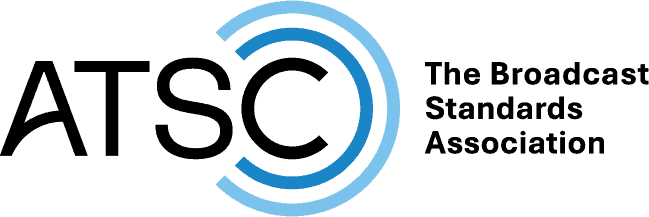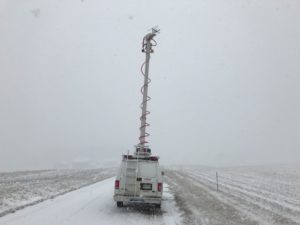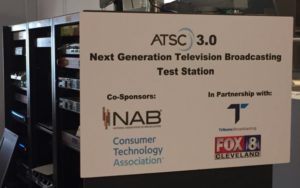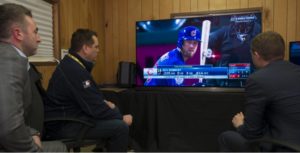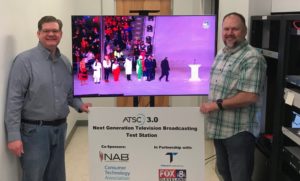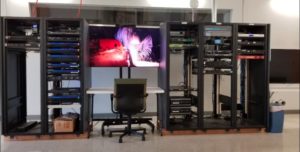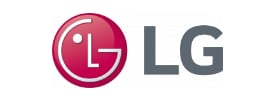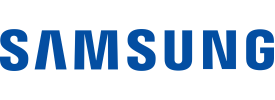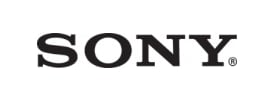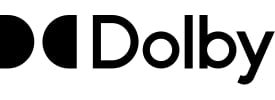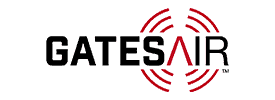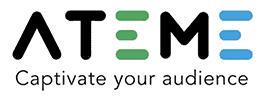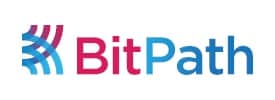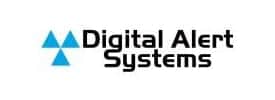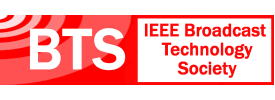- About
- Members
- Sponsors
- Subcommittees
- Technical Documents
- News
- Events
- Spotlight ATSC 3.0
- Contact Us
- Member Login
- Member Meetings
- Advanced Search
Search Site
Member Links
- About
- Members
- Sponsors
- Subcommittees
- Technical Documents
- News
- Events
- Spotlight ATSC 3.0
- Contact Us
- Member Login
- Member Meetings
- Advanced Search
NAB-CTA Test Station Winding Down: We’ll Always Have Cleveland…
Posted on December 2, 2019 in ATSC News
By Lynn Claudy, NAB Senior Vice President
ATSC 2019 Board Chairman
Having provided useful information and practical insights over the past five years, activities at the NAB/CTA ATSC 3.0 test station in Cleveland are winding down. As Next Gen TV continues to transition from the development phase to the implementation phase, the need for an over-the-air test station sponsored and operated by the television industry as a neutral test facility has now become less critical. In addition, the FCC’s TV channel repacking plan has made the broadcast test station shutdown in Cleveland somewhat inevitable.
But that’s getting ahead a bit. Let’s start at the beginning and take a look at the successes through the years produced by this industry-led collaborative project.
The Origin Story
During the DTV transition, analog channel 8 Tribune station WJW operated on channel 31 for its transitional DTV channel. At the conclusion of the digital transition in June 2009, WJW opted to return to its original channel 8 NTSC allocation for its digital operation and left the channel 31 transmission facility in place but dormant at its transmission facility in Parma, Ohio, about 10 miles south of Cleveland. This was a ready-made RF transmission facility for ATSC 3.0 experimental broadcasting on an interference-free FCC-allocated TV channel, and WJW owner (then Tribune Broadcasting) was generously willing to have the facility used for the benefit of the industry.
First Projects and VHF tests
The first to use the facility for experimental broadcasts were LG Electronics, Zenith and GatesAir. Starting in the spring of 2015, they conducted field tests and demonstrations of their “Futurecast” next generation television system, which was one of several early proposals in the ATSC 3.0 development process. Watching 4K programming received over-the-air in the Rock and Roll Hall of Fame and mobile reception in the bus enroute to the museum were moments that will be long remembered by those in attendance that summer.
In June 2015, the Consumer Technology Association and NAB agreed to cooperate and share expenses for building and operating an ATSC 3.0 test station at the WJW facility, a partnership which has continued through 2019. The facility’s experimental license was transferred to NAB in October 2016, and the engineering consulting firm of Meintel, Sgrignoli and Wallace was contracted to provide integration services and operational expertise with the goal of building a full end-to-end ATSC 3.0 broadcast station. (Osborn Engineering was later added as a second contractor for the test station project in September 2018 as a local in-town technical resource.)
In January 2016, just in advance of the start of the FCC’s “reverse” auction in the incentive auction program, the Cleveland station was used to test ATSC 3.0 transmission on VHF Channel 9, using WJW’s channel 8 backup antenna being operated off-channel on channel 9, fed by a GatesAir transmitter and Dielectric mask filter loaned to the station. These were in fact the first industry-led field tests of the ATSC 3.0 physical layer. Overall, the tests showed that the system worked well in the real world and found no “red flags” for operation in high VHF spectrum, which was helpful for broadcasters bidding in the auction to move to VHF.
Historic 2016 World Series Broadcast
Support from manufacturers for populating the test station began to grow, and a full broadcast chain conforming to ATSC 3.0 was put in place. With a little help (well, a lot of help) from the Fox network and many others, Game 2 of the 2016 World Series (whenthe Cleveland Indians hosted the Chicago Cubs) was successfully broadcast on channel 31 using the ATSC 3.0 test station. The pristine signal was received on a prototype LG TV located in the Fox Sports Broadcast Compound outside the stadium in downtown Cleveland. The small audience notwithstanding, this represented the first live ATSC 3.0 broadcast of a major professional sporting event. Historic in a few ways: A win for the industry, and the Cubs went on to win the World Series.
In February 2018, in cooperation with NBC and SES, the 4K UHD TV satellite feed of the Winter Olympic Games in Korea was received, re-encoded in ATSC 3.0 format and broadcast from the Cleveland test station and successfully received on a number of prototype ATSC 3.0 TV sets. Cleveland winter weather and practical issues of re-conditioning old satellite dish systems delayed success until the latter part of the Olympics, but all problems were eventually solved in time for men’s ice hockey and the closing ceremonies to be part of the experimental broadcast.
Field testing of four different modulation/coding combinations of the ATSC 3.0 physical layer was conducted in February/March 2018. The field tests demonstrated how the robust and flexible nature of the ATSC 3.0 standard can facilitate tailoring service applications throughout a major metropolitan area. With measurements taken at two antenna heights for each of the 100 total measurement sites, 800 data sets were gathered, making this the most comprehensive field test to date for assessing ATSC 3.0 coverage of a real market using a variety of transmission parameters.
Laboratory Receiver Tests
In March and April of 2018, the facility was used for laboratory testing of available ATSC 3.0 receivers. Impairment and interference tests were conducted on two prototype 3.0 receivers, one being a prototype consumer television receiver and the other being a commercial reference receiver. Results from the comprehensive tests were encouraging, even though the sets were prototypes and not intended to be evaluated as commercial products.
At the 2018 NAB Show, the Cleveland test station was featured in the ATSC “Road to ATSC 3.0” exhibit. At the Cleveland station, an ETRI professional receiver was used to receive the station’s live over-the-air transmission. The diagnostic and monitoring display from the ETRI unit was then sent as live video to Las Vegas via the Internet and shown on a large monitor in the ATSC exhibit along with digital signage explaining the details of the Cleveland station and the real-time reception performance of the broadcast signal.
Layer Division Multiplexing Tests
A field test program exercising the Layer Division Multiplexing feature of the ATSC 3.0 physical layer was conducted in November 2018, assessing coverage throughout the Cleveland market for the core and enhancement layers with varied injection levels. The results showed that the LDM feature provided great promise for implementing configurations such as scalable video coding, including the use of mobile reception for the robust core layer.
UHDTV Tests Combining SHVC, LDM and HDR
In May 2019, Technicolor, in partnership with ETRI and Kai Media, conducted demonstrations at the Cleveland facility highlighting the transmission of an LDM HD base layer supplemented by a UHD enhancement layer using SHVC scalable video coding coupled with Technicolor’s SL-HDR1 HDR technology. Receivers placed in downtown Cleveland proved that these tools, which can open up new innovative business models for broadcasters, also function well in challenging urban reception conditions.
A multi-day “interop” event was held in mid-September 2019 at the Cleveland test station to bring together vendors across the ATSC 3.0 ecosystem to help facilitate the interoperability of their respective products and the performance of pre-production consumer television receiving devices. More than 20 companies and over 50 people attended the Cleveland event. Many issues were solved through collaboration and networking and all left the event with more insight and knowledge about ATSC 3.0.
Conformance Testing Role
The most recent major activity taking place at the Cleveland test station is related to the conformance testing program for ATSC 3.0 receiver manufacturers seeking to use the consumer-facing NEXTGEN TV logo announced by CTA in September 2019. In coordination with CTA and consumer electronics manufacturers, the Cleveland test station has been producing bit streams in PCAP format of various operating scenarios. The recorded PCAP files are available on the cloud-based file repository maintained by CTA through which receiver manufacturers can test their products and subsequently apply for certification to use the NEXTGEN TV logo on those products. Several dozen PCAP files generated at the Cleveland test station exercising the capabilities of the ATSC 3.0 system are included in the official conformance test suite for logo certification.
Other Activities
The test station has been utilized for various verification testing of equipment and services, including Dolby AC-4 audio, advanced emergency information, closed captioning, program guides and watermark tests. All along, a variety of interested visitors from the industry have been welcomed at the test station for tours and meetings, including an all-day meeting of NAB’s TV Technology Committee in May 2019.
Winding Down
As part of the FCC channel repacking plan associated with the incentive auction process, a TV station in not-too-far-away Youngstown, Ohio, was reassigned to channel 31 and began operation on that frequency in early August 2019. To avoid any interference to the Youngstown station, transmissions from the Cleveland facility on Channel 31 were discontinued at that time.
This experimental broadcast station has provided a wealth of information and insight. Arguably, it has largely served its purpose at this point, as we will start to see commercial stations going on the air in the coming year. While closed circuit testing and evaluations have continued at the station in recent months, activities are winding down in Cleveland. Eventually, much of the equipment in Cleveland will be relocated to NAB’s new headquarters and technology center at 1 M St SE in Washington DC after NAB moves to its new building in early 2020 and re-purposed for a DC-based ATSC 3.0 demonstration facility.
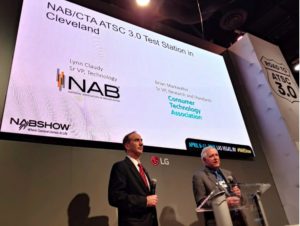
CTA’s Brian Markwalter (left) and NAB’s Lynn Claudy update
2019 NAB Show attendees about 4-1/2 years of
Cleveland test station activities.
Thanks to Participants
The test station has been sponsored by NAB and CTA in partnership with WJW (a former Tribune station, now owned by Nexstar) and engineering services provided by Meintel, Sgrignoli & Wallace and Osborn Engineering. A non-exhaustive list of companies supplying equipment for the station on a loan or reduced cost basis include Any Future Technologies, Ateme, CleverLogic, Comark Communications, DekTec, Dielectric, DigiCAP, Dolby, DSBroadcast, ENENSYS, Ericsson, ETRI, GatesAir, Harmonic, Hitachi Kokusai Electric Comark, Kai Media, LG Electronics, Linear Acoustic, Monroe Electronics, Nielsen, Samsung, Sony, TeamCast, TitanTV, Triveni Digital, Unisoft, Verance and Zenith.
Thanks to all—it’s been a great ride!
Posted in ATSC News
News Categories
News Archives
Subscribe
Subscribe to The Standard, our monthly newsletter. Learn More
Join ATSC
ATSC is a membership organization with both voting and observer categories. Voting members include corporations, nonprofit organizations, and government entities, and they participate actively in the work of ATSC. Observers are individuals or entities not eligible to be a voting member.
Subscribe to our Newsletter
Subscribe to The Standard, our monthly newsletter, to stay up-to-date with ATSC news and events around the world.
Site Links
Contact Us
Advanced Television Systems Committee, Inc.
1300 I Street NW, Suite 400E
Washington, DC 20005
Do you have questions about ATSC?
About ATSC
The Advanced Television Systems Committee, Inc., is an international, non-profit organization developing voluntary standards and recommended practices for digital terrestrial broadcasting. ATSC member organizations represent the broadcast, broadcast equipment, motion picture, consumer electronics, computer, cable, satellite, and semiconductor industries. ATSC also develops digital terrestrial broadcasting implementation strategies and supports educational activities on ATSC standards.
© 2025 ATSC
